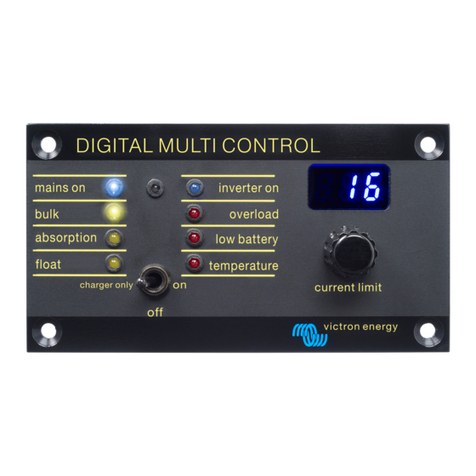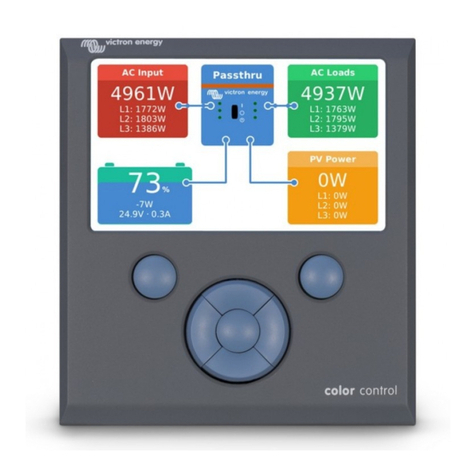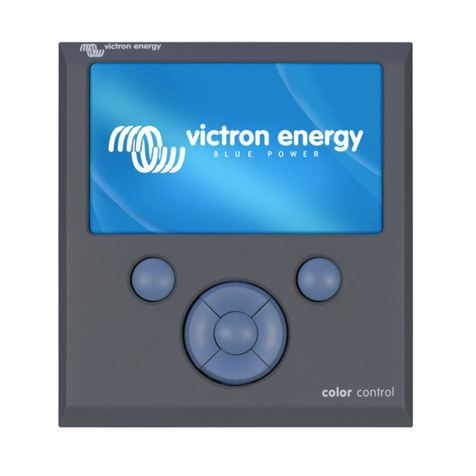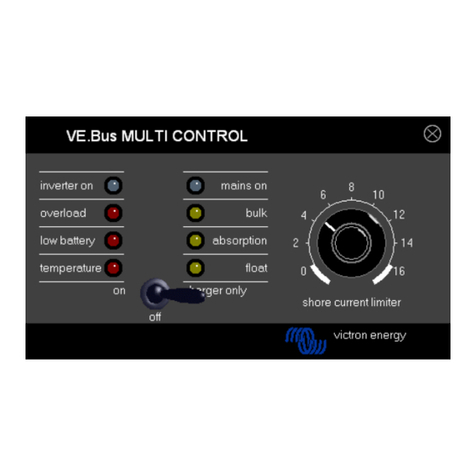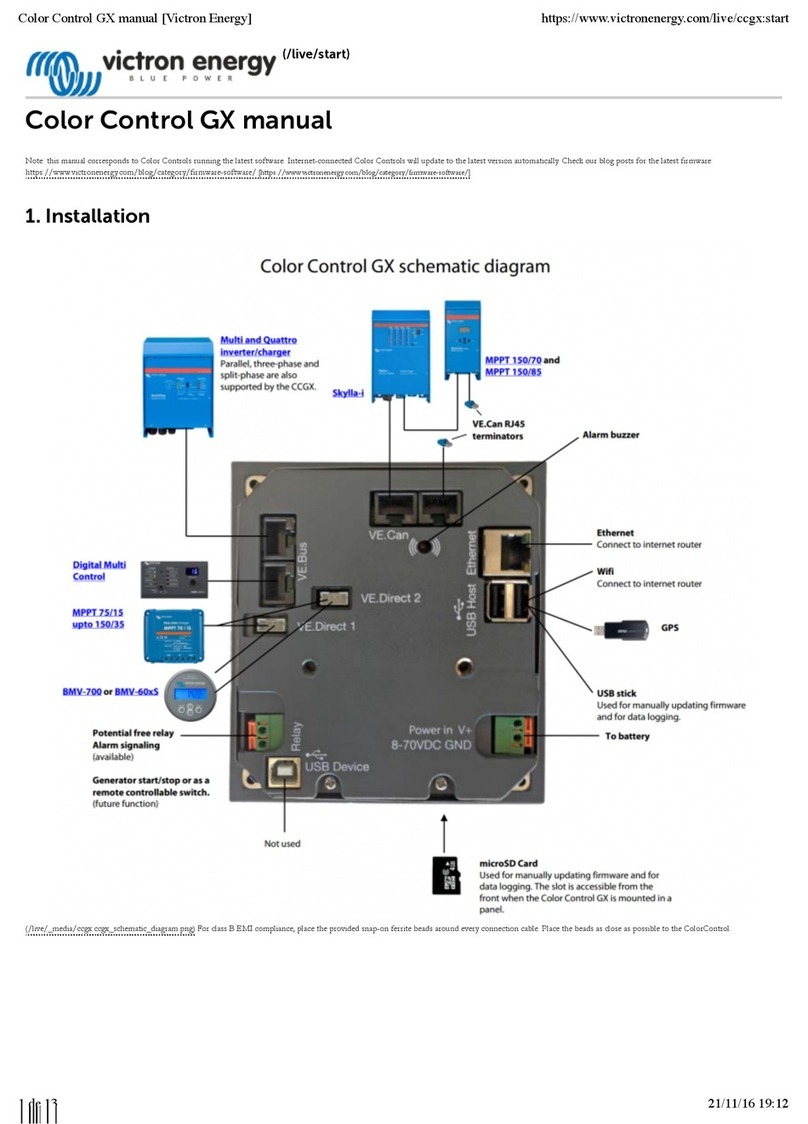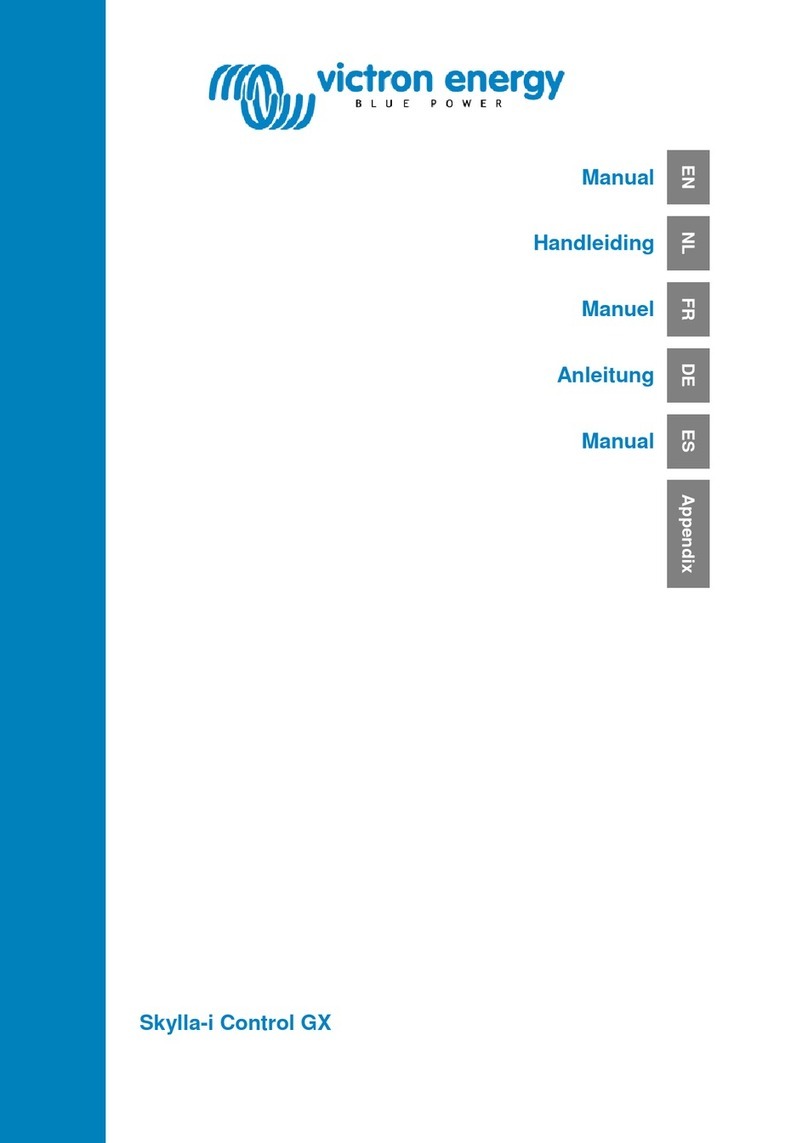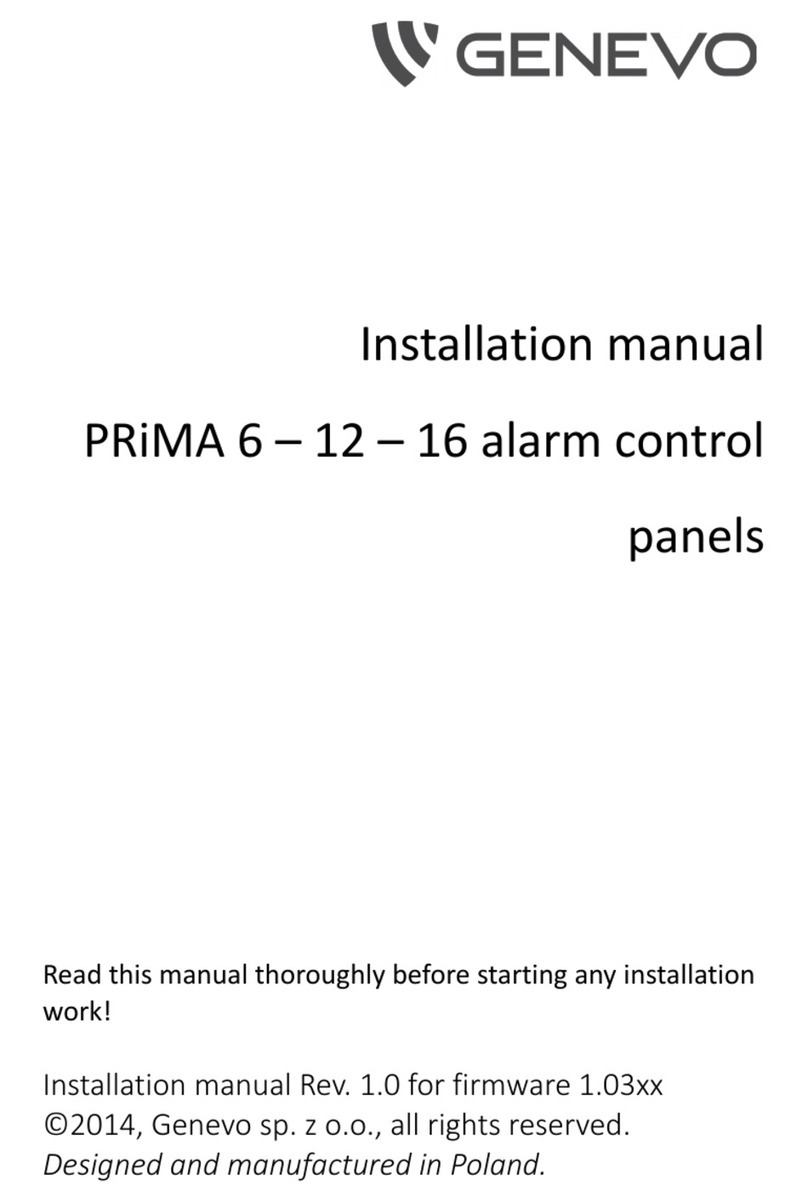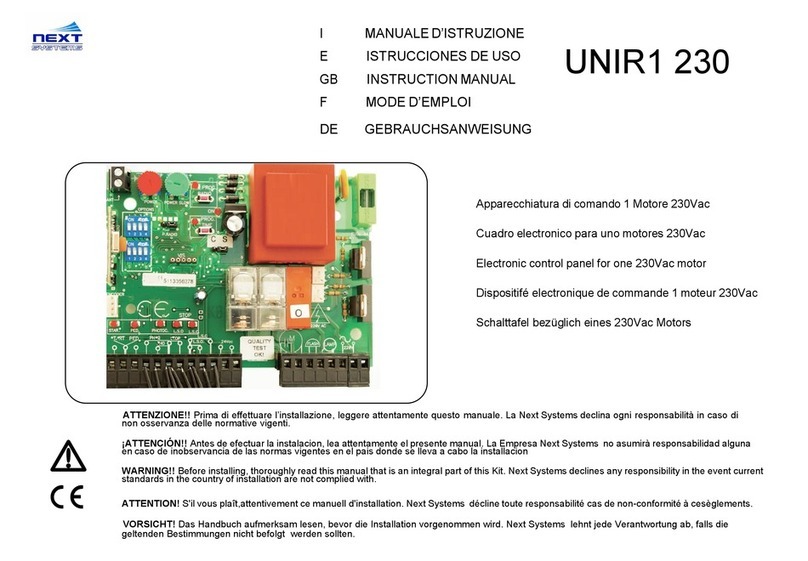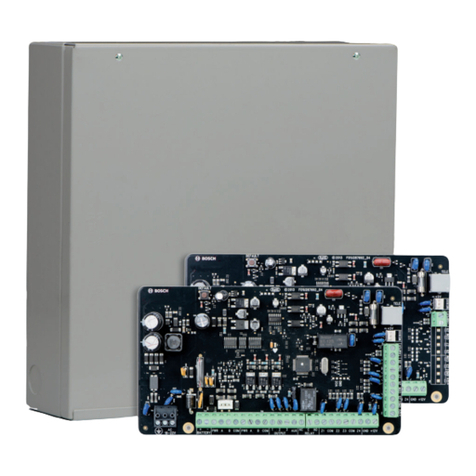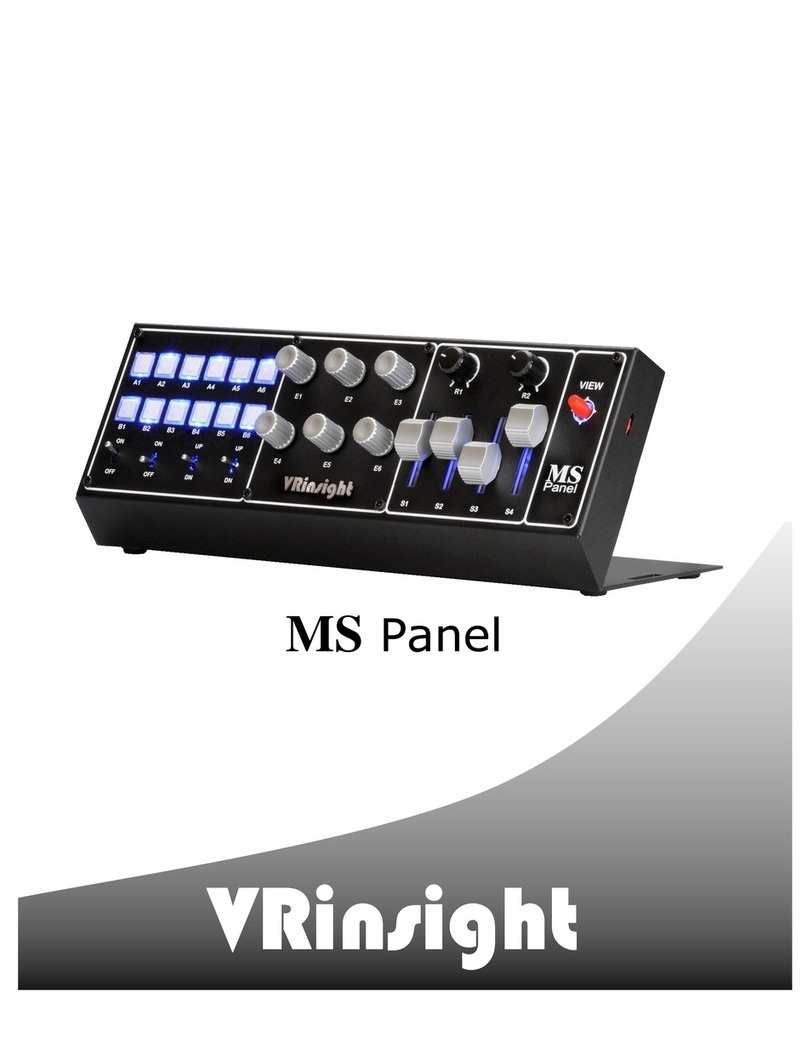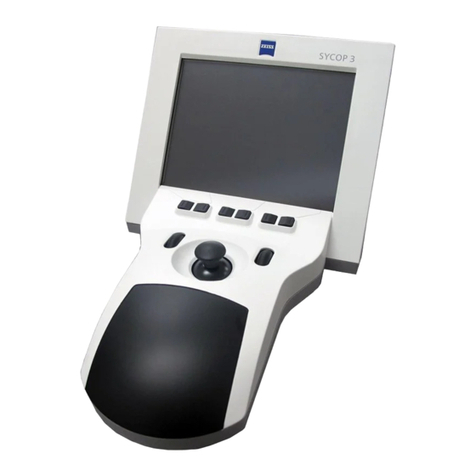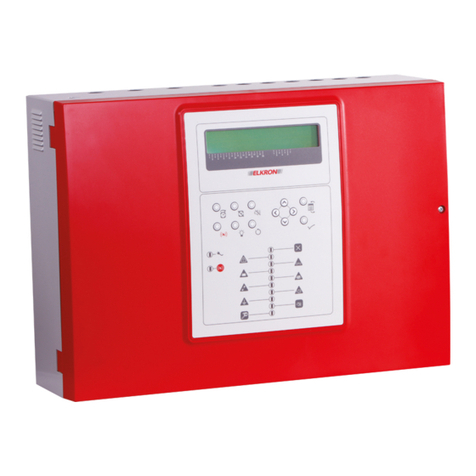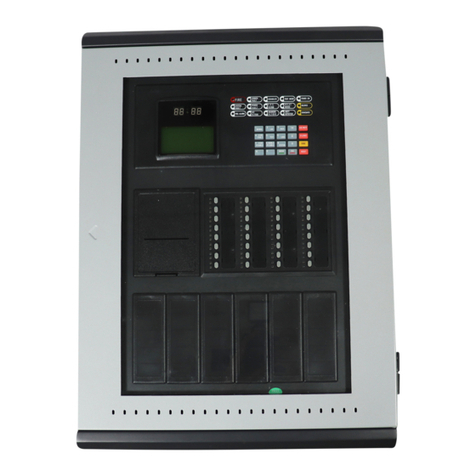This deadlock can be avoided in two ways:
Power the CCGX from the battery; or
Cut pin 7 in the VE.Bus cable connected to the CCGX
Cutting pin 7 of the VE.Bus cable to the CCGX (brown/white according to standard RJ45 ethernet cable colour coding) allows the VE.Bus products to start up without waiting for the CCGX to boot up
first.
The disadvantage of cutting pin 7 is that switching the VE.Bus device off will be less effective: although it will stop charging and inverting, it will still be in standby mode and therefore drawing more current
from the battery than if pin 7 had been left in place. Typically this is only relevant in Marine or Automotive systems where it's normal to regularly switch the VE.Bus device off. For those types of systems we
recommend that you do not cut pin 7, but simply power the CCGX from the battery.
Isolation
Because the CCGX is connected to many different products, please ensure that proper care is taken with isolation to prevent ground loops. In 99% of installations this will not be a problem.
The VE.Bus ports are isolated
The VE.Direct ports are isolated
The VE.Can ports are isolated
The USB ports are not isolated. Connecting a Wi-Fi Dongle or GPS Dongle will not create a problem as it is not connected to another power supply. Even though there will be ground loop when
you mount a separately-powered USB hub, during extensive testing we have not found that it caused any issues.
The Ethernet port is isolated, except for the shield: use unshielded UTP cables for the Ethernet network
Extending USB ports by use of a self-powered USB hub
Although the number of USB ports can be extended by using a hub, there is a limit to the amount of power that the onboard USB port can provide. When extending the number of USB ports, we recommend
you always use powered USB hubs. And to minimize the chance of issues, be sure to use good-quality USB hubs.
1.4 Connecting Victron products
1.4.1 Multis/Quattros/Inverters (VE.Bus products)
In order to keep this document short we are going to refer to all Multis, Quattros and Inverters as VE.Bus products.
The earliest version of the VE.Bus devices which can be connected to the CCGX is 19xx111 or 20xx111, which were released in 2007. VE.Bus firmware 26xxxxx and 27xxxxx are also supported …but
18xxxxx is not.
Note that it is not possible to use the Remote On/Off (header on the VE.Bus control PCB) in combination with a CCGX. The jumper link needs to be in the header, as it is by default.
Single VE.Bus products
To connect a single VE.Bus product, connect it to one of the VE.Bus sockets on the back of the CCGX. Both sockets are identical, use either one. Use a standard RJ45 UTP cable, see our pricelist
[https://www.acceptance.victronenergy.com/information/pricelist].
Parallel, split- and three-phase VE.Bus systems
To connect multiple VE.Bus products, configured as a parallel, split-phase or three phase VE.Bus system, connect either the first or the last VE.Bus product in the chain to either one of the VE.Bus sockets
on the back of the CCGX. Use a standard RJ45 UTP cable, see our pricelist. [https://www.acceptance.victronenergy.com/information/pricelist]
Systems consisting of five or more VE.Bus products, connected to a CCGX with serial number HQ1628 or earlier require the 'CCGX dongle for large VE.Bus systems
[https://www.victronenergy.com/upload/documents/connection-drawing-for-CCGX-dongle-for-VEbus-large-systems.pdf] (Product Number: BPP900300100).
VE.Bus systems with Lithium batteries and a VE.Bus BMS
Connect the CCGX to the socket labelled ‘MultiPlus/Quattro’, or to one of the Multis/Quattros in the system. Do not connect it to the Remote panel socket on the VE.Bus BMS.
Note that it will not be possible to control the On/Off/Charger Only switch, nor to change the input current limit with the CCGX: these options are automatically disabled in the CCGX menu
when a VE.Bus BMS is used. The only way to control a Multi or Quattro when used with a VE.Bus BMS is to add a Digital Multi Control to the system.
Combining MultiPlus/Quattro with a VE.Bus BMS and a Digital Multi Control is possible. Simply connect the Digital Multi Control to the RJ-45 socket on the VE.Bus BMS labelled Remote panel.
To allow auto-power-down in the CCGX in case of a low battery, make sure the CCGX is powered via the VE.Bus BMS: connect Power in V+ on the CCGX to Load disconnect on the VE.Bus
BMS. And connect both negative leads to the negative stub of a common Battery.
Combining the CCGX with a Digital Multi Control
It is possible to connect both a CCGX and a Digital Multi control to a VE.Bus system. The ability to switch the product On, Off or set it to Charger Only via the CCGX will be disabled. The same applies
to the input current limit: when there is a Digital Multi Control in the system, the input current limit which is set at that control panel will be the master-setting, and changing it on the CCGX will not be
possible.
Connecting multiple VE.Bus systems to a single CCGX
